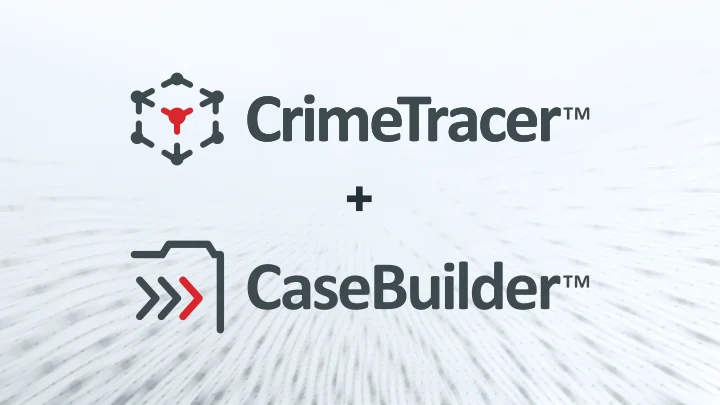Perhaps the most critical element in the investigator’s toolbox is investigative analysis—the practice of gathering, aggregating and analyzing various facts and circumstances about a crime or a potential criminal element in order to develop a clearer picture of who the perpetrator might be.
Investigative analysis today involves a lot more than just personality profiling. Psychology Today has broken the practice down into three phases: first, the investigation, during which law enforcement uncovers links between crimes and entities to define the likely perpetrators, and then attempts to develop probable cause to arrest a suspect. Second is the apprehension phase, in which the analysis forms the basis for deciding where to look for the perpetrator, what evidence should be covered in a search warrant, and so on. And finally, in the prosecution phase, the articulation of that analysis becomes part of the case being built against the arrestee.
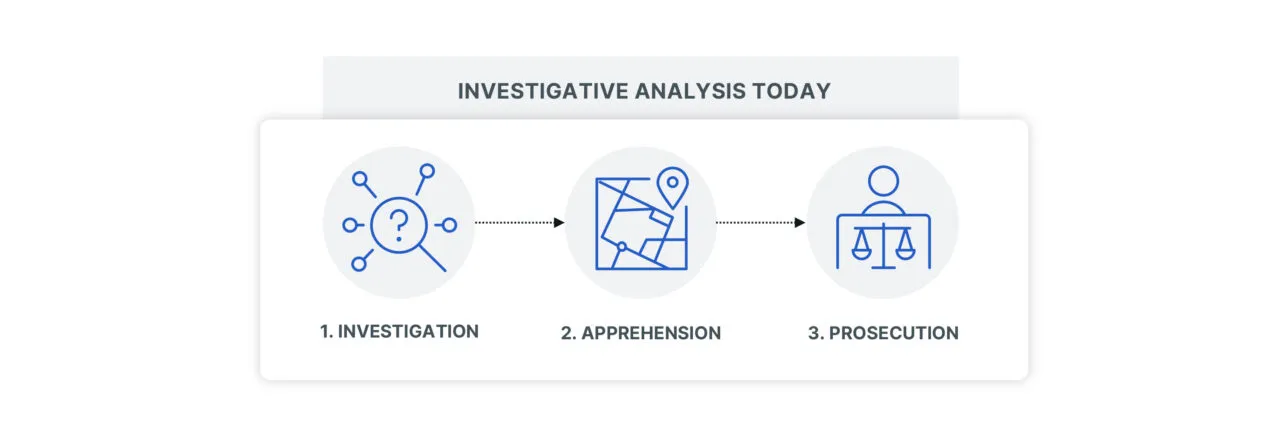
Modern agencies across the country can now draw on new technological advancements to consolidate investigative analysis functions into a single platform. Two advanced law enforcement solutions, CrimeTracer™ and CaseBuilder™, have been integrated into the SafetySmart™ platform to put the entire investigative analysis process in the hands of agencies at all levels.
Investigative Analysis on Your Desktop
CrimeTracer is a law enforcement search engine that helps investigators gather and consolidate the data from which their investigative analysis can be developed. Able to extract information from more than a billion law enforcement documents, encompassing over 40 distinct document types, from agencies across the country, CrimeTracer can uncover the key details and connections that can flesh out the profile of a likely crime or criminal.
CaseBuilder is the case management side of the equation, enabling the investigative team to assemble the data and documentation needed to request a search warrant, for instance, or packaging the evidence for the prosecution phase. It enables investigators to build on what’s known or suspected about a crime or a potential suspect to narrow down who to look for and where.
To put it simply, CrimeTracer helps find the data that the investigative analysis relies on, while CaseBuilder lets investigators assemble and cross-reference the data in order to build a coherent analytic picture—a profile of the investigation’s target. Using the two products in concert, agencies can develop a thorough investigative analysis, whether the investigation is proceeding inductively or deductively.
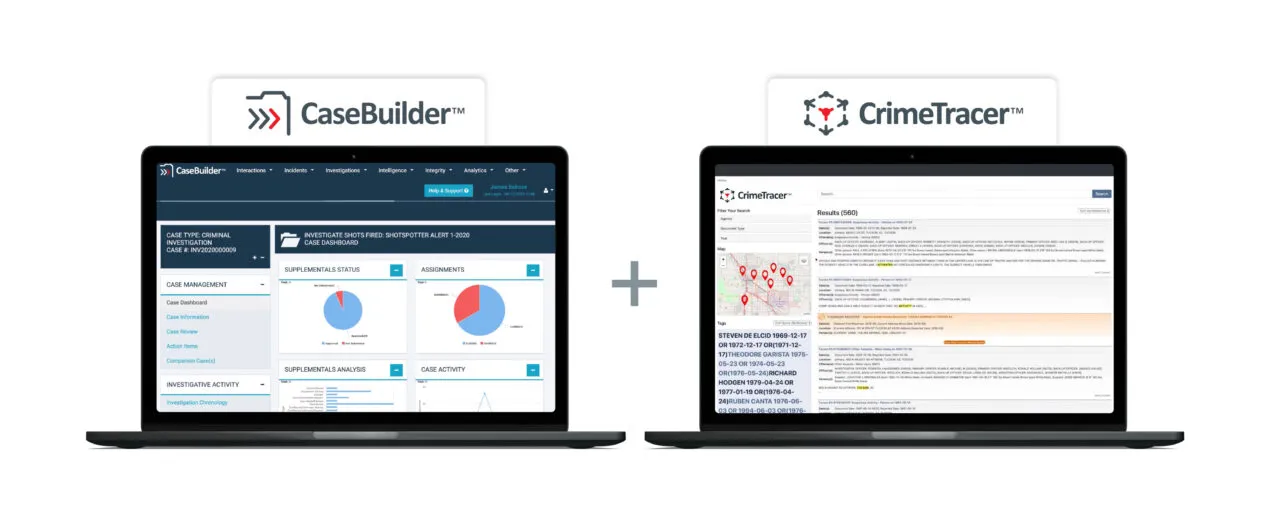
Inductive Investigations
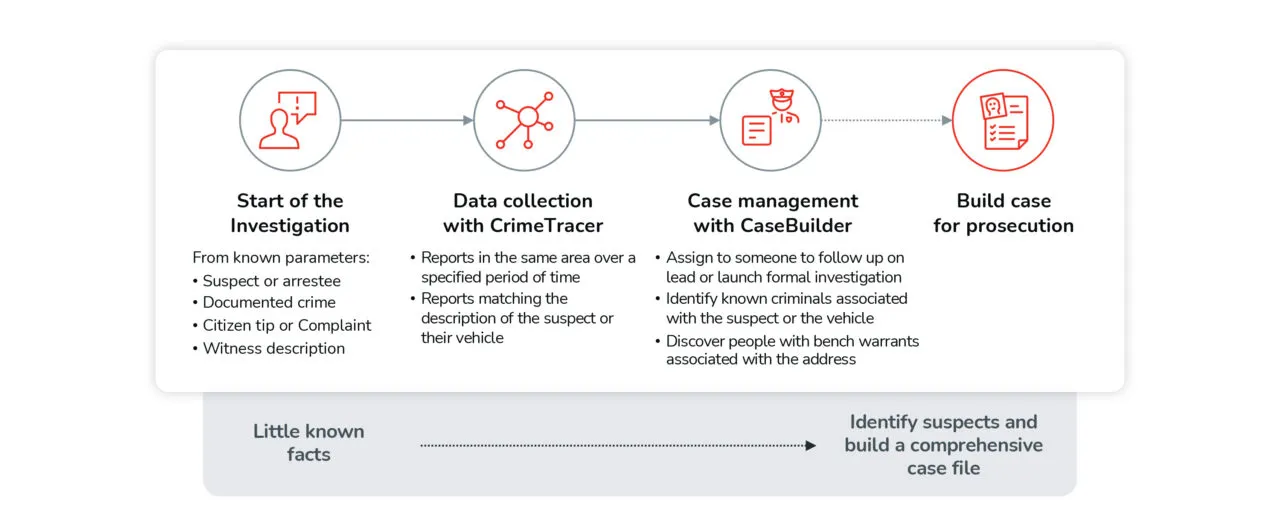
An inductive investigation starts with some kind of known fact—a suspect or an arrestee, a documented crime, a citizen tip or complaint, etc. The arrest might be for a single offense, but the arresting officer might suspect the offender is connected to more crimes. The tip or complaint, on the other hand, could come through the Citizen Portal module in CaseBuilder, where it can be used to open a new case or be assigned as a new detail to a case that’s already open. The complaint might be something like, “my neighbor threatened somebody with a gun,” or it could be a witness description from an interview taken at the scene of a crime.
Building on that initial data point, the investigator can broaden the scope of the investigation. The process would start with questions like, “What else do we know about this person? Have they been involved in criminal activity before? Has their address been associated with a crime or criminals?” CrimeTracer can help answer these questions.
Whatever information is discovered is then added to the case file in CaseBuilder. If a formal investigation of the complaint hasn’t yet been launched, the case can be assigned and tracked to ensure leads are followed up on in a timely and efficient manner. All of that information and any subsequent information is documented and kept in the case file for an eventual presentation in the courtroom.
Using these analytical tools, the investigation can then be developed further, identifying known criminals associated with a suspect or vehicle, or perhaps discovering associated people with bench warrants linked to an address, providing the basis for a contact or a search. Starting from a small pool of known facts, an investigator can leverage CaseBuilder and CrimeTracer to develop a detailed picture of who they should be looking for.
Deductive Investigations
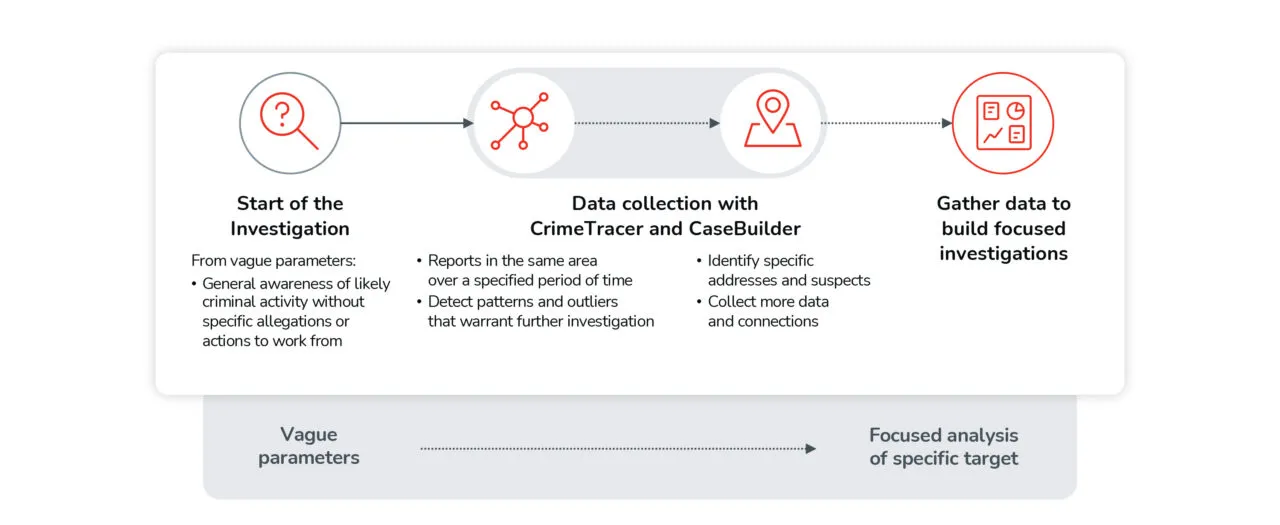
The deductive approach to an investigation starts with more vague parameters—general awareness of likely criminal activity or suspicions about a situation without specific allegations or targets to work from. As with an inductive investigation, the starting point may be a witness description or a citizen complaint. But in this case, the complaint will not be about a specific person, vehicle or occurrence but might be as vague as, “I keep seeing people who look like they’re selling drugs near where I work.”
Or, following up on a gun threat complaint, an investigator can draw a virtual fence around an address and look for other reports of gun activity in the same area over a specified period of time. Or, if a witness to an assault has provided a description of the suspect and their vehicle, the investigator could search for reports of someone matching the description who may have been somehow associated to a matching vehicle, perhaps only having been involved in a traffic stop nearby.
Starting from such an imprecise description, CaseBuilder and CrimeTracer enable an investigator to develop much more specific leads. Searching for instances of “drugs” near a specific address, for example, may turn up various patterns, anomalies and outliers that could warrant further investigation. The results can be filtered by time of day (for instance, during the tipster’s work hours), type of drug, and other criteria to further suggest specific points to look into further. From there, the description of who a suspect or suspects might be can get more and more detailed.
Once an investigation yields fruit, taking concrete action requires development and articulation of probable cause. Suspicious patterns aren’t enough to make an arrest or obtain a search warrant. But as the investigation progresses, and more information is uncovered, more evidence is gathered, and the case is further documented. Such documentation provides more data and more connections to help produce an ever more focused analysis of who committed the crime, until probable cause exists and the target is arrested.
Conclusion
Investigative analysis can extract a meaningful suggestion of an investigation’s target from a variety of data points that may not seem connected at first. Whether in an inductive or a deductive investigation, the combination of CrimeTracer for consolidating and analyzing data and CaseBuilder for coordinating and documenting the case in one seamless platform makes investigative analysis a tool available to investigators at all levels.




